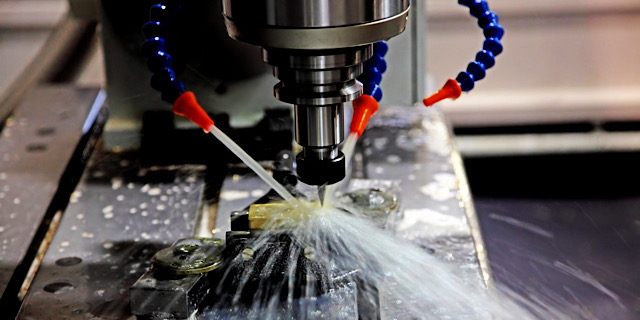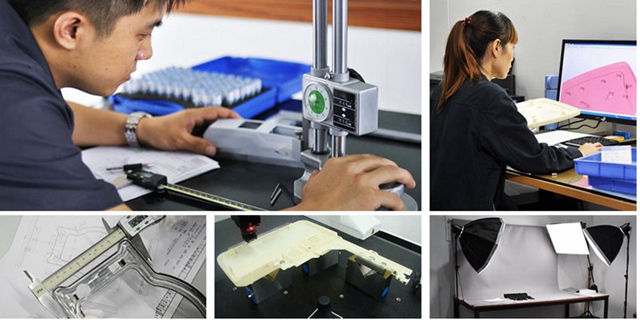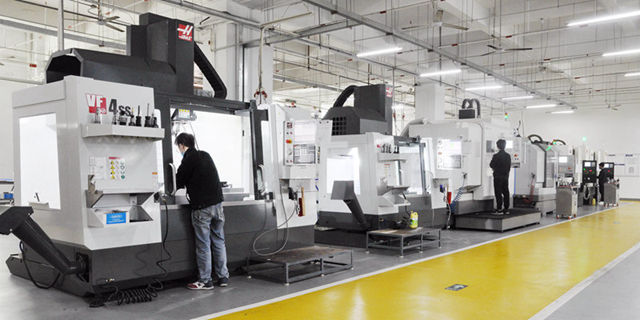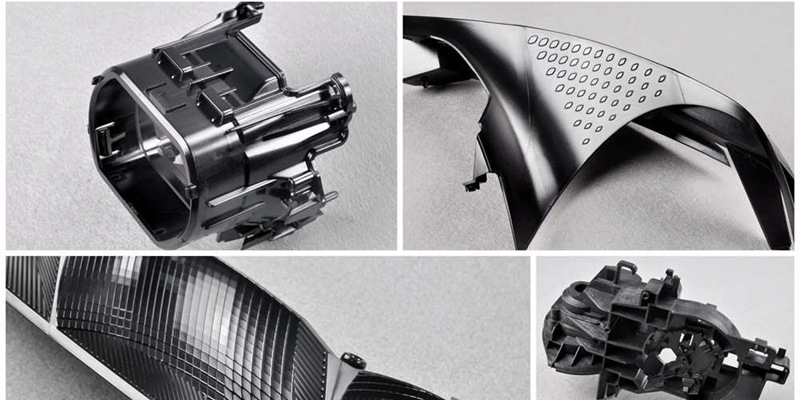Posted on Sept. 14th, 2020, | By WayKen Project Manager
For clients who are new in the CNC prototyping industry, getting a reliable company to deliver according to demands may be challenging. However, knowing what to look out for can save time and get the best prototypes for production. Sometimes, a company may decide to manufacture specific components in-house. At other times, the services of a prototyping specialist may come in handy. It all depends on what the manufacturer wants and the capacity of resources that are available to deliver the task.
In some cases, it is easier to work with a third-party prototyping company in terms of cost and quality. Nevertheless, it all boils down to building a seamless partnership with the prototyping manufacturer. Once that is established, such prototyping experts will be able to deliver according to the client’s requirements. Before proceeding, it is essential to know the types of prototyping.
Classes of Prototypes
There are two classes of prototypes in the CNC prototyping industry, namely: Low-Fidelity Prototypes and High-Fidelity Prototypes. These types of prototyping define the similarities between prototypes and end products in terms of aesthetics and functionality. The closer the similarities, the more the component gravitates towards the high-fidelity end of the spectrum.
1. Low-Fidelity Prototypes
A low-fidelity prototype incorporates some of the elements of the final product. In most cases, these similarities center around the look and feel of the end product, rather than its functionality. Hence, a manufacturer creates a prototype to show the client how a product will look like at the final phase of production. Low-fidelity prototypes take less time to manufacture and provide more scalability for the manufacturer. In other words, it is easier to add or remove features during the product development cycle.
2. High-Fidelity Prototypes
A high-fidelity prototype entails a more comprehensive design that tends to look and function like the end product. This prototype encompasses all the aspects of the user interface (UI) and user experience (UX) of the actual part. High-fidelity prototyping is essential during the final phases of the product development cycle, as it incorporates the interactive elements and visuals of the product for testing.
High-fidelity products are expensive and difficult to adjust than their counterparts; however, they give clients a comprehensive detail of the final product, who, in turn, provide feedback. A prototyping company can design a low-fidelity model at the beginning of the product development cycle and a high-fidelity model at the end phase.
Functionality of Prototypes
It is important to note that prototyping differs from production. It may be incorporated during the production cycle to display the potential aesthetic and functionality of a product, but it is in no way the same as production. Companies can use prototypes for demonstrations, testing and evaluation, business pitches, patenting, market research, production run-through, and other activities. However, prototypes are not for commercial use and do not replace the final products.
Due to the functionality of prototypes, prototyping companies manufacture these one-off components in small quantities – 100 units or lesser. For this reason, these manufacturers do not need mass-producing plants to fabricate such parts. The CNC prototyping industry provides CNC machining technology to clients by building CNC-machined prototypes in batches under a short timeframe. This manufacturing process offers end-users the flexibility to carry out production from concept to final production. The CNC machining companies help customers improve product design, which allows them to save resources and create the ideal product for mass consumption.
Merits of CNC Rapid Prototyping

Working with CNC rapid prototyping machines during production comes with several advantages, some of which include speed, accuracy, and efficiency. It is easy to finish a prototype under a short period using CNC machines than human labor, especially if they are in large quantities. This process also eradicates human error during fabrication, while cutting the prototype at unimaginable speeds.
Another area worth considering with CNC prototyping is cost-effectiveness. Manufacturers can incorporate prototyping components into the production line quickly, without having to spend tons of money. Due to the accuracy and efficiency of this type of prototyping, companies can also curb wastage of materials.
Manufacturers can incorporate CNC prototyping into metal fabrication prototyping to reduce the complexities in producing metal prototypes. There are several pain-staking, multilayered procedures involved in metal fabrication; they include:
- Stamping
- Welding
- Extrusion
- Folding
- Spinning
- Bending
- Cutting
- Finishing
With CNC prototyping, manufacturers can automate the metal prototyping process, with less human intervention. This methodology reduces manual labor and saves the company resources. Machinists can program CNC machines to cut solid parts according to their blueprints using accurate metal fabrication techniques. The computer reads the programs and converts them to specific instructions that will guide the machine to cut, spin, bend, and fold metal parts to the required shape and form before other production processes commence. As a result, many manufacturing companies favor the CNC prototyping technology above other methods.
How to Search for an Ideal CNC Prototyping Company

There are several manufacturers in the CNC prototyping industry that specialize in manufacturing prototypes for clients. For this reason, it may be overwhelming for a client to find the right manufacturer. Nevertheless, some guidelines in this section will help end-users locate a reliable CNC shop.
1. Delivery Speed
In CNC prototyping, product delivery timing is essential to meet up with market demands, and a company that meets this requirement has more edge over other competitors. An ideal CNC company should be able to design prototypes quickly to meet up with deadlines.
2. Quality Control
Inasmuch as delivery speed is essential in satisfying a client, quality control stands out as well. A CNC manufacturer has to ensure that prototypes are of high quality and they conform to industrial standards with documentation and certification to guarantee these products.
3. Customer Service
How a CNC company handles customers’ requests, inquiries, and complaints determines how much market share they will control in the CNC prototyping industry. A reliable CNC shop should be able to provide expert advice and meet unusual requests in the best way possible while retaining all the etiquettes of excellent conversation.
The A – Z of Ordering a Prototype from a CNC Shop

For clients that are new to prototyping, ordering prototypes from a third-party prototyping industry may be overwhelming. Such individuals have to find the ideal company that manufactures high-quality prototypes under a short timeframe and at an affordable cost. However, the process is not as complicated as one may think.
To begin with, a client places a request to the prototyping manufacturer, known as a request for quotation (RFQ), detailing the individual’s requirements. Once the company receives this request, they evaluate it and derive estimates of the manufacturing process based on the materials, fabrication equipment, and labor to be used for the project. The CNC company sends a quote to the recipient containing a breakdown of the cost, which the latter runs through to determine whether to proceed or check out another company.
Due to the advancement in technology, clients can fill an RFQ form online via a prototyping industry’s website. This process saves time, effort, and money. The customer has to send the digital design file containing the blueprint of the prototype to be designed. The design format can be in stereolithography (STL) or standard for the exchange product model data (STEP). Using this format, the company can visualize clearly what the client wants to build. Without this design file, the company can still work based on the client’s request, but it will not be easy to provide an actual cost estimate for the project.
If a client agrees for the manufacturing company to proceed with the prototyping design, the company has to sign a non-disclosure agreement (NDA), which prevents them from leaking or selling the blueprints to other individuals or corporations. There are several NDAs available on the internet for customers to access and use. Once this process is complete, the company starts manufacturing the prototypes based on the user’s requirements.
The RFQ contains other details, like the number of units, type of material, finish, and deadline. The clearer the information, the easier it is for the company to design an accurate prototype and meet up with the production deadline. To get the best result, clients have to collaborate with manufacturers at every phase of prototyping. A reliable company sends constant feedback on the design and discuss ways to improve the build of the prototype. They may also request additional information from the client in line with the requirements.
Whereby the end-user is not satisfied with any phase of the prototyping-machined components, the CNC company can change certain parts of the prototype to meet the client’s satisfaction. Most importantly, a customer should be able to come up with top-quality designs; this helps to save time and reduce complexities in manufacturing prototypes. There are design guidelines that govern CNC prototyping. Outside these guidelines, a CNC shop may experience difficulties converting the design to an actual prototype.
The CNC company may manufacture the prototype entirely in-house or outsource some design elements to other prototyping industries; this happens when some of the prototype components are unique. In that case, the CNC shop notifies the client on such actions before taking on the project. Also, the prototyping manufacturer may guarantee the machined components, which makes them liable should the parts become faulty or damaged.





